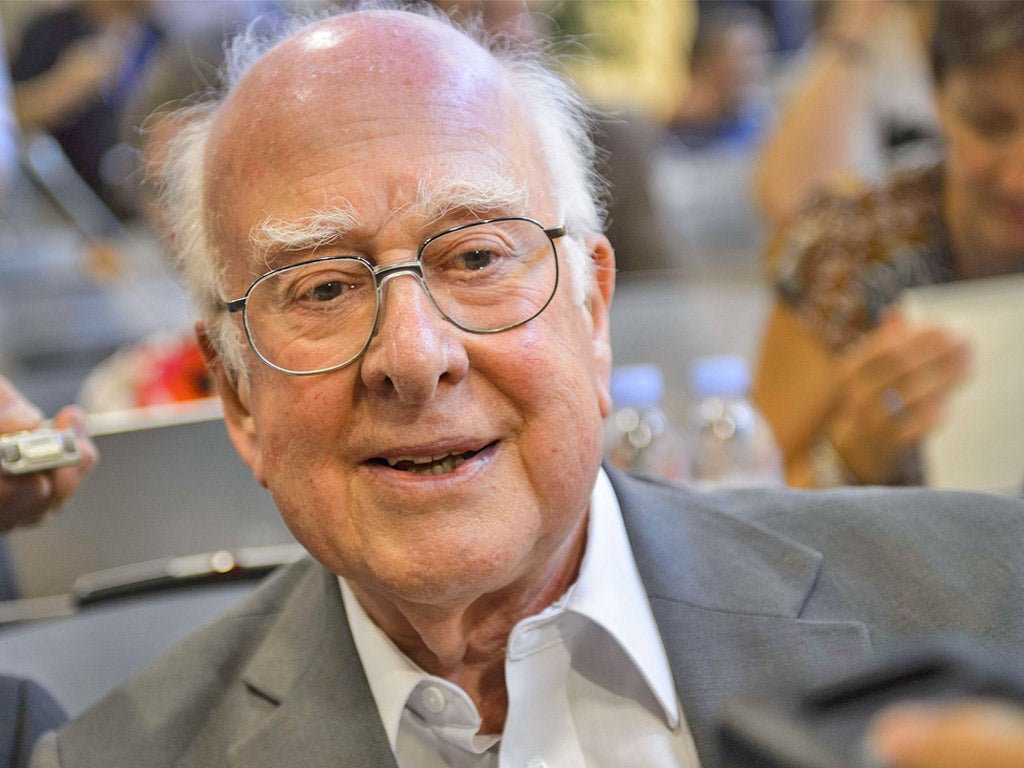Your support helps us to tell the story
From reproductive rights to climate change to Big Tech, The Independent is on the ground when the story is developing. Whether it's investigating the financials of Elon Musk's pro-Trump PAC or producing our latest documentary, 'The A Word', which shines a light on the American women fighting for reproductive rights, we know how important it is to parse out the facts from the messaging.
At such a critical moment in US history, we need reporters on the ground. Your donation allows us to keep sending journalists to speak to both sides of the story.
The Independent is trusted by Americans across the entire political spectrum. And unlike many other quality news outlets, we choose not to lock Americans out of our reporting and analysis with paywalls. We believe quality journalism should be available to everyone, paid for by those who can afford it.
Your support makes all the difference.Professor Peter Higgs has journeyed to prominence along with the famous particle that bears his name.
Now at the age of 84, he is fast becoming a global celebrity as creator of the theory behind the "God particle".
But recognition was a long time in coming: the quiet physicist has been waiting for science to catch up with his ground-breaking ideas since 1964.
It was in that year he dreamed up the concept after a moment of inspiration while walking in the Cairngorms.
Two scientific papers followed, the second of which was initially rejected and then finally published in the respected journal Physical Review Letters.
Prof Higgs's groundbreaking proposal was that particles acquire mass by interacting with an all-pervading field spread throughout the universe. The more they interact, the more massive and heavy they become.
A "boson" particle was needed to carry and transmit the effect of the field.
His concept sparked a 40 year hunt for the Higgs boson which culminated last July when a team from the European nuclear research facility at Cern in Geneva announced the detection of a particle that fitted the description of the elusive Higgs.
Scientists used the world's biggest atom smashing machine, the £2.6 billion Large Hadron Collider on the Swiss-French border, to track down the missing particle.
Peter Higgs was born in Newcastle in 1929, the son of a BBC sound engineer.
After his family moved to Bristol, he proved a brilliant pupil at Cotham Grammar School before going on to read theoretical physics at King's College London.
He was awarded first class honours in 1950, and after failing to secure a lectureship at King's College, set off for Scotland and the University of Edinburgh.
Prof Higgs retired from this post in 2006 and assumed the title of emeritus professor.
His contribution to physics has long been recognised within the scientific world - with eight honorary degrees and dozens of academic prizes since the 1980s.
Never one to blow his own trumpet, the scientist is described by friends and colleagues as "very unassuming" and shy.
Some believe his retiring nature may even have held back his career.
But despite his best efforts to keep a low profile, he now finds himself in the spotlight: autograph hunters have even started to approach him in the street.
Last year he missed out on a Nobel prize but the professor was made a Companion of Honour in the New Year Honours list.
The accolade confers no title but only a select group are rewarded with it for achievements in the arts, literature, music, science, politics, industry, or religion.
Prof Higgs remained typically humble when his honour was announced. "It's very nice to be right sometimes," he said.
PA

Join our commenting forum
Join thought-provoking conversations, follow other Independent readers and see their replies
Comments